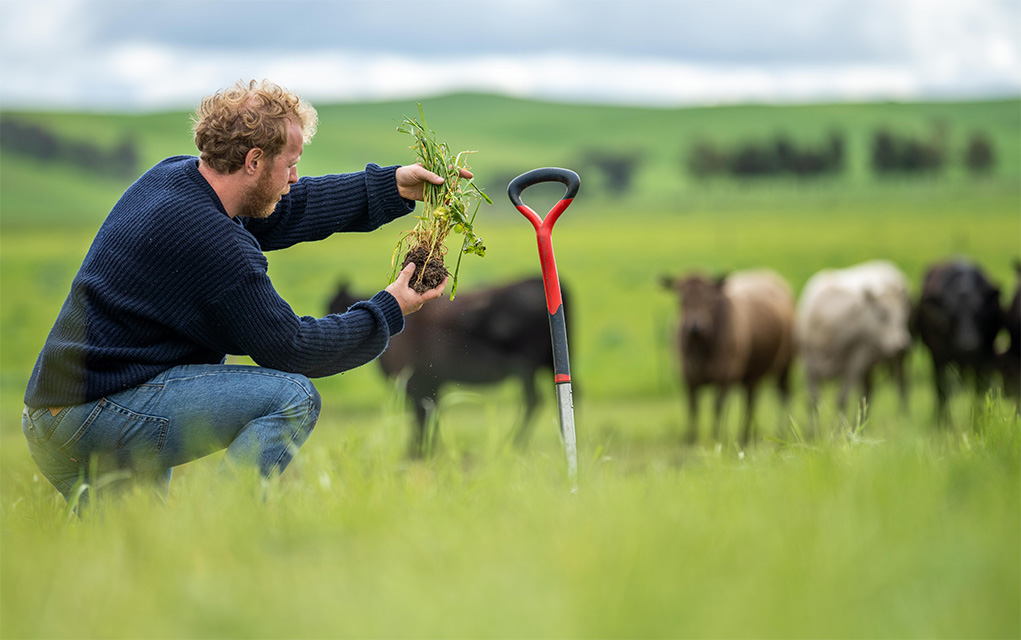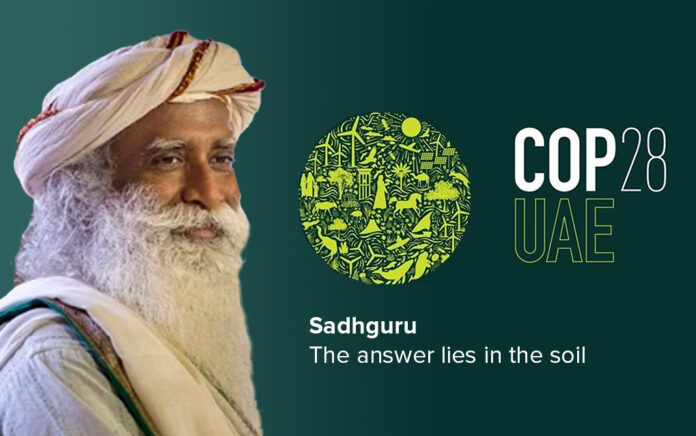One of the many interesting and more colourful characters at Cop28 includes India’s Sadhguru, an avid environmental advocate and respected spiritual leader. His advocacy in the Journey to Save Soil caught media attention a couple of days ago because his explanations for its preservation put a simple twist on what can be a very complicated subject.
Revitalizing soil is a powerful and often underestimated tool in mitigating climate change. Soil plays a critical role in carbon sequestration, water filtration, and supporting biodiversity. By implementing various soil revitalization practices, we can harness its potential to combat climate change significantly.
Soil soaks up carbon like a carnivore salivates for a steak. And when it is healthy, good soil contains high levels of organic matter, predominantly carbon. Practices such as cover cropping, crop rotation, and reduced tillage help maintain and increase soil organic matter.
This organic matter acts as a carbon reservoir, sequestering atmospheric carbon dioxide through a process called carbon sequestration. By enhancing these practices, we can potentially store billions of tons of carbon in the soil, thereby reducing the concentration of greenhouse gases in the atmosphere.
Healthy soil teems with diverse microbial life and contributes to increased agricultural productivity. Soil microbes play a crucial role in nutrient cycling, enhancing plant health, and improving soil structure.
While this can work on a massive agricultural scale, practices like composting at home and the use of organic fertilizers not only enrich the soil but also promote microbial diversity. This increased biodiversity contributes to the resilience of ecosystems against climate change impacts, such as extreme weather events and droughts.
“We cannot address climate change without addressing soil,” Sadhguru, says.
“Revitalizing soil can achieve 20-30% of the Greenhouse Gas mitigation target. Increasing Soil Organic Carbon (SOC) worldwide by 0.4% per year can achieve this. The Save Soil movement has been embraced by the world, with over 4 billion people being reached. The Save Soil pavilion at #COP28 is emblematic of how Soil is being recognized as a solution to climate change.”
Sadhguru has a great sense of humour and points out that food doesn’t come from Uber Eats. It comes from soil – a fact that may surprise some urban dwellers.
“The healthier the soil, the healthier your food, the healthier your body.”
When asked what can be done by a youth member in the audience, he replied, “start local, involve your neighbourhood, start a vegetable garden, get your hands in the soil – not in the dirt as is commonly said. Soil is not dirty. It is rich; it is our foundation of a healthy life in a safe environment.”

On a broader scale, promoting regenerative agricultural practices is crucial in revitalizing soil health. Regenerative agriculture focuses on restoring and enhancing natural ecosystem processes. Techniques like holistic grazing, where livestock are rotated through pastures, help regenerate grasslands and improve soil health by allowing the land to rest and recover.
Moreover, educating and incentivizing farmers to adopt these practices is considered essential. Government policies that support sustainable agriculture, provide subsidies for regenerative practices, or levy taxes on carbon emissions (for emitters genuinely changing their ways), can encourage widespread adoption of soil revitalization methods.
The key takeaway here is that revitalizing soil presents a multifaceted solution to mitigate climate change. By enhancing soil health through various practices like carbon sequestration, water retention, erosion prevention, and promoting biodiversity, we can harness its immense potential to sequester carbon and build resilience against the impacts of climate change.
Along with an essential reduction in the use of fossil fuels, soil revitalisation is a fundamental aspect of sustainable land management that deserves more attention and investment in the fight against the climate crisis.
For more details on Cop28, check out the official website.






